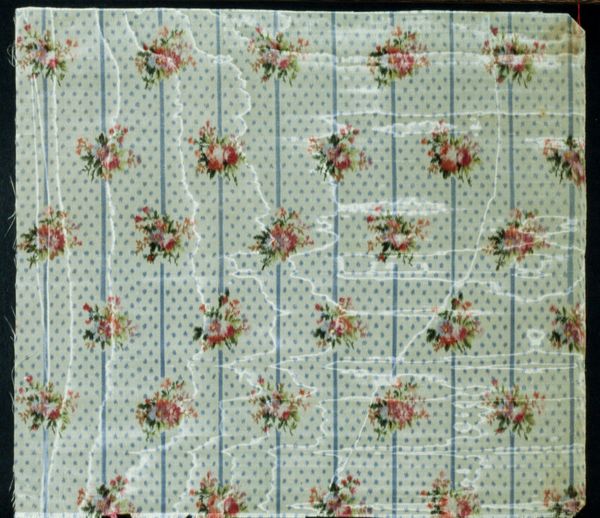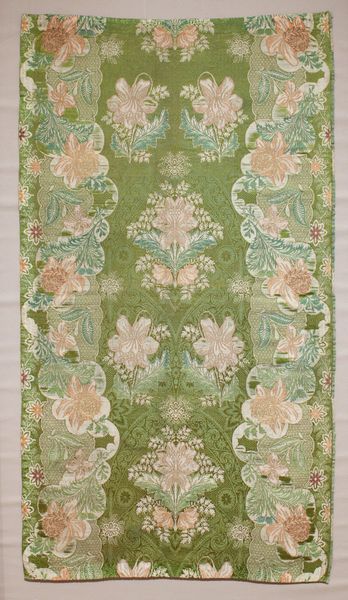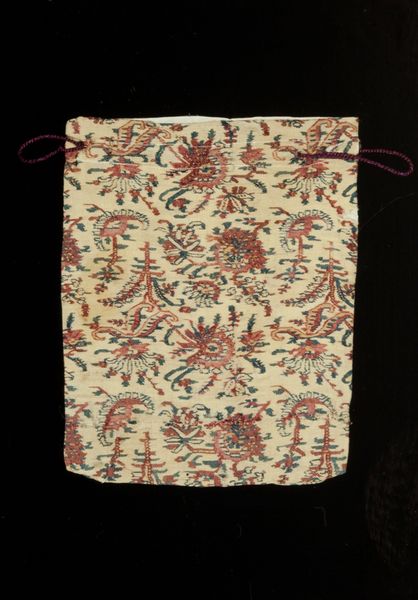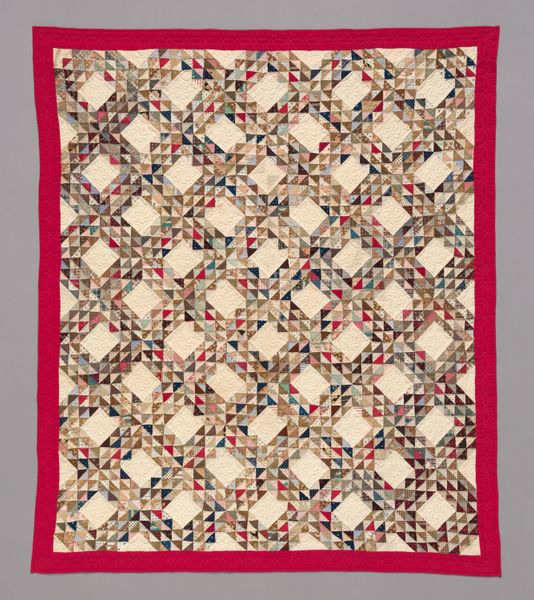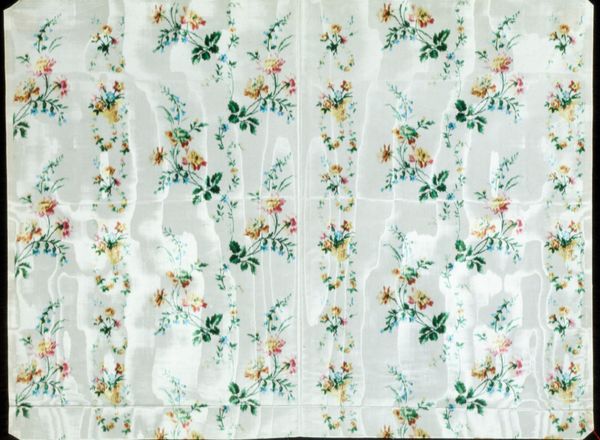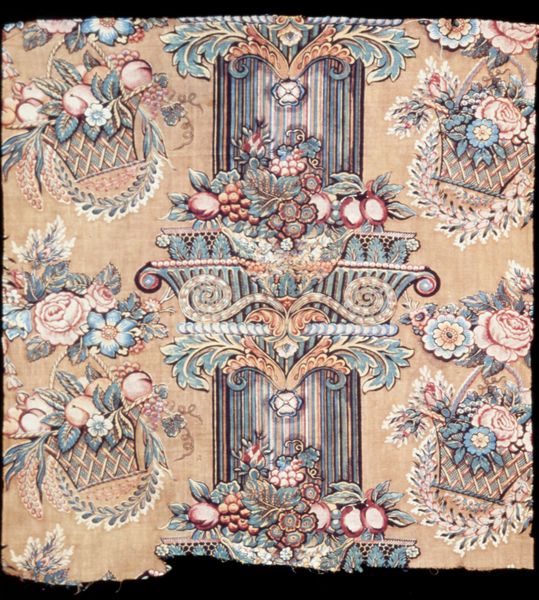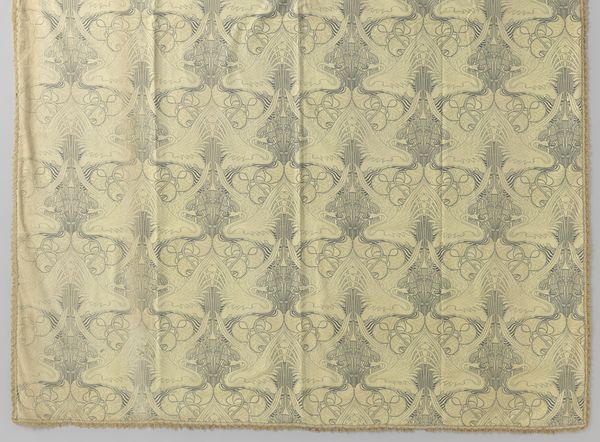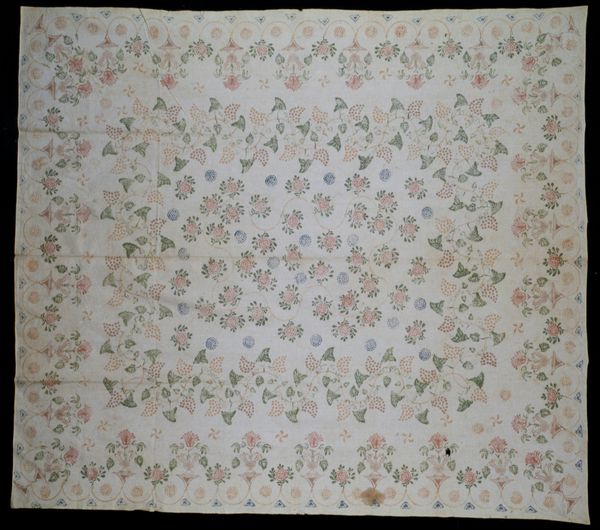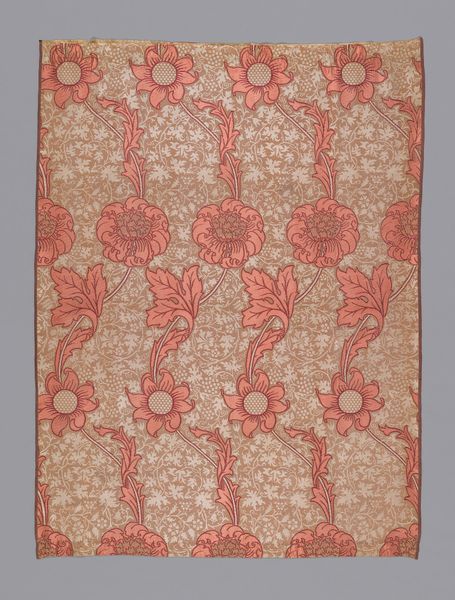
silk, textile
#
silk
#
textile
#
decorative-art
#
rococo
Dimensions: 24 1/2 x 21 1/2 in. (62.23 x 54.61 cm)
Copyright: Public Domain
Curator: What a captivating textile! We’re looking at an 18th-century silk panel, currently residing at the Minneapolis Institute of Art. The Rococo influence is evident, and it really foreshadows the Pattern and Decoration movement, doesn’t it? Editor: It whispers elegance. Pale rose grounds a dance of floral arrangements intersected by cream and gilded ornaments—a garden party frozen in time! Curator: The means of production are interesting here, aren't they? Think about the labor involved. Every thread carefully woven, every detail a testament to skill, trade networks transporting raw materials. This wasn’t just art; it was industry. The use of silk underscores its association with luxury, accessibility dictated by economic status and reflecting evolving consumption patterns. Editor: It makes you wonder what room it graced. Maybe cushioning ladies while discussing love? Look closer… see the tiny imperfections? Perhaps the slight variations in dye shade across each tier? It hints at hand-made intimacy lost in our mass-produced world. It also hints at wear; if you stare long enough, it may invite you to envision narratives untold… lost courtships and clandestine whispers in perfumed rooms? Curator: Exactly! This blurring of craft and high art is important to recognize. The Rococo period embraced embellishment. Ornamentation, though dismissed by some, often served social functions, a visual signifier of belonging and a projection of refinement that often mirrored political maneuvering and social mobility, and a departure from older norms about aesthetics and material culture. Editor: Yet, its legacy extends beyond the socio-political framework. For me, it ignites questions about ephemeral moments and the allure of faded memories. Isn’t that fascinating? Curator: Indeed. The survival of objects like this reminds us to engage with artistic expressions through their means of production, what material conditions made them possible, who enjoyed them, what messages were communicated—material concerns providing nuanced readings about art, about lived experience! Editor: Beautifully put! I can almost smell the fading lavender potpourri—the memory of sunshine and secrets preserved within silk threads.
Comments
minneapolisinstituteofart about 2 years ago
⋮
In the late eighteenth century, woven textile designs shifted from the large, elaborate patterns of the Rococo style to the more restrained taste of the Neo-Classical style. Sprays of small flowers accompany thin bands of rocaille (shell encrusted or pebbly) motifs, woven with gold and silver, as well as multi-colored threads. This panel may have been part of a furniture fabric for a matched set of chairs and sofas used in an elegant French reception room.
Join the conversation
Join millions of artists and users on Artera today and experience the ultimate creative platform.

